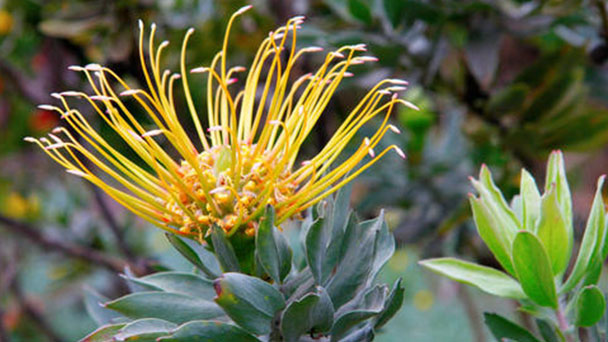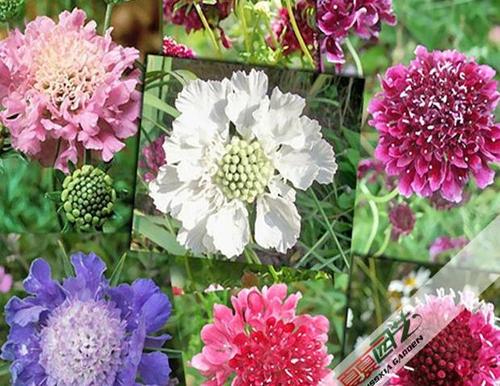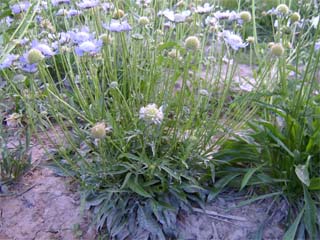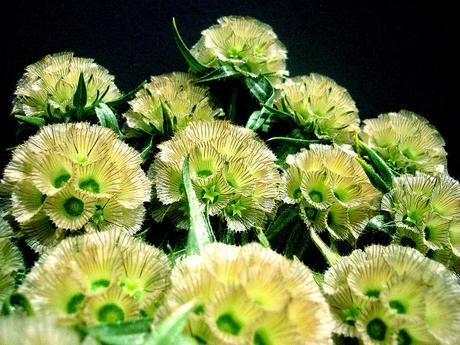Pincushion Flower (Scabiosa Atropurpurea) Profile
Written by Maggie
Sep 28 2021

Pincushion flower, scientific name Scabiosa atropurpurea, is a biennial herbaceous plant, plant height 30-60cm, smooth stem, many branches and leaves round ovate, basal leaves nearly spatulate, stem leaves opposite, 3-4 pairs of pinnately deep lobed to fully lobed, sparse long white hair. Inflorescence of pincushion flower is terminal, 4-5 - lobed corolla, inflorescence margin florets larger, radiate. The pincushion flower color is rich, the flowering period is long, is the flower bed, the flower border, the flower diameter, the flower cluster, the flower group arrangement common material. Pincushion flower can also be used as cut flowers or potted plants.
Pincushion Flower Picture

Pincushion Flower Characteristics
Pincushion flower (Scabiosa Atropurpurea) is a one or two years herb, 30-60cm tall, smooth, much-branched stem. Leaves are rectangular oblong-ovate, basal leaves nearly spatulate, cauline leaves opposite, 3-4 pairs pinnately lobed to fully lobed, sparsely long white hairs. Inflorescence of pincushion flower is terminal, 4-5 - lobed corolla, inflorescence margin florets larger, radiate. The color of the pincushion flower is deep purple, blue-purple, rose red, light red, pink or white, fragrant.
Pincushion Flower Habits
Pincushion flower has cold resistance, avoid hot, high humidity and waterlogging, the requirement of good drainage, loose and fertile, moderate pH soil. The soil is calcareous sandy loam with good drainage and sunshine. The seedlings should be 15 cm high and the core should be picked once. The topdressing should be done once a month. The height of the pincushion flower should be supported to prevent lodging. pincushion flower likes warm avoid high temperature, the suitable temperature for growth is 10 ~ 25℃.
How to Grow and Care for Pincushion Flower
Pincushion Flower Temperature
Pincushion flower (Scabiosa Atropurpurea) likes the warm sunshine environment, the most suitable germination temperature should be kept between 15-20℃, this range of temperature is more conducive to the growth and germination of plants.
Pincushion Flower Fertilizer
The growth of the Pincushion flower cannot be separated from fertilizer. Fertilizer should be applied every 2 weeks or so during the flowering period, so as to ensure that the plant has sufficient nutrients for plant growth.
Pincushion Flower Soil care
Pincushion flower likes the warm environment. It is not high on the soil requirements and can grow in the general soil, soil with calcareous sandy loam, but to loose fertile, good drainage soil planting is the best.

Pincushion Flower Propagation
Spring and autumn sowing, often autumn sowing. The suitable temperature for pincushion flower germination is 15 ~ 20℃. The seeds are soaked in water for several hours and then sown, which can improve the germination rate. After sowing, the seeds are covered with about 0.5 cm of western soil and germinate after about 7 ~ 12 days.
Pincushion Flower Insects & Diseases
Due to its long stalk, the pincushion flower (Scabiosa Atropurpurea) may need support or staking to keep an upright habit. Aphids and mites are minor issues. To prevent root rot, ensure that this plant is situated in an area with good drainage.
Pincushion Flower Uses
Pincushion flowers have rich colors and a long flowering period and are common materials for flower beds, flower borders, flower paths, flower clusters and flower groups. Pincushion flowers can also be used as cut flowers or potted plants.
Varieties of Pincushion Flower
Scabiosa Atropurpurea—The Annual Pincushion:
In some areas, the annual pincushion flower, or scabiosa atropurpurea, will reseed. However, in most conditions, you will have to replant them each year. The annual pincushion flower is slightly smaller than its perennial cousins, and it is also available in a wider range of colors. This pincushion flower variety offers extra shades, including burgundy, rosy pink, and blue-tinged lavender, along with the standard blue, purple, and white. The many varieties of annual pincushion flowers exist thanks to the breeding efforts of horticulturists, who have produced more dwarf-sized cultivars as well as more choices for gardeners when it comes to color options. Unlike the perennial variety of the pincushion flower, which has true green leaves that stay green, the foliage of the annual pincushion comes in many hues as well, and a few types are bred especially for their foliage, which changes color throughout the blooming season.
Scabiosa Caucasica —The Perennial Pincushion:
Scabiosa caucasica is most often found in blue and white, but you can also find this breed of pincushion flower in a perennial pink. These plants have an extended blooming period that will make your beds explode with dashes of brilliant color that sticks around after other flowers would have faded. If deadheaded often, the unique blossoms will keep on coming—from late spring throughout the entire summer and on into the fall, until the first few frosts of winter finally quell the blooming. Unlike its annual cousin, the perennial pincushion flower is hardy enough to survive most winters. It will come back strong after the winter thaws to yield colorful blooms year after year. The perennial pincushion flower also produces a larger and more showy bloom than its annual counterpart, with flowerheads that usually measure up to two and a half to three inches.

Latest Updated
- Benefits of Bugleweed - 7 Science-backed Health Benefits
- Bugleweed Dangers & Side Effects - Is It Poisonous?
- How to Plant Evergreen Trees - What You Should Know
- When to Plant Evergreens - Grow Guide for Evergreen Trees
- 12 Wonderful Evergreen Shrubs for Your Garden
- 12 Popular Evergreen Plants with Pictures for Beginners
- When And How To Prune A Lilac Bush Like a Pro
- How to Grow & Care for Lilac Vine (Hardenbergia Violacea)
- Japanese Lilac Tree (Syringa Reticulata) Care & Propagation Guide
- Shumard Oak Pros and Cons - What to Know
Popular Articles
- Winter maintenance of Antirrhinum Majus
- How to Grow Terminalia Mantaly Tree
- How to Grow and Care for Crossostephium Chinense
- How to grow Antirrhinum Majus in spring
- Peristeria Elata (Dove Orchid) Profile: Info & Care Guide
- Underwatered Snake Plant (Sansevieria Trifasciata) - Signs And How To Fix
- How to Care for Brazilian Jasmine Plant (Mandevilla Sanderi)
- How to Grow & Care for Graptopetalum Purple Delight in Summer
- Rosa Chinensis (China Rose): Plant Growing & Care Tips
- How to Care for Baby Sun Rose (Aptenia Cordifolia)